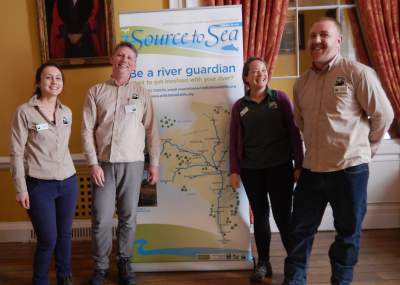
partnership to advance the conservation of the Hampshire Avon.
Celebrating World Water Day 2017, I represented the IWSN at the Annual River Avon meeting in Salisbury. The meeting was hosted by the Water team of the Wiltshire Wildlife Trust (WWT), a county-based NGO (I am a member of their Conservation and Policy Committee). However, the WWT Water team does not act in isolation but within a partnership of NGOs and statutory bodies with interests in the river.
As many readers will know, the UK has many rivers with the name ‘Avon’. ‘Afon’ is the Celtic word for ‘river’, hence the pervasion of the name (also Ouse, Frome, Bourne and many more). ‘River Avon’ actually means ‘river river’! The Avon in question is most commonly referred to as the Hampshire Avon, though most of it is actually in the county of Wiltshire with much of the lower reach in Dorset. Confused? Most of the Bristol Avon is in Wiltshire!
The UK is host to 85% of the world’s chalk rivers, a valuable and ecologically significant resource with many beneficial uses and wider ecosystem services, though also a legacy of unsympathetic habitat management, floodplain disconnection, extensive groundwater abstraction from the permeable chalk aquifer, and a litany of problems familiar to river managers and conservationists.
The partnership around the Hampshire Avon is seeking to restore river functioning and ecology, and with it heritage and utility. This is a noble effort for a fine example of a large chalk river, five rivers converging around Salisbury as a metaphorical ‘hand’ to form the main stem of the lower Avon. (These major tributaries are the Nadder, Wylye, Avon and Bourne, merging close to Salisbury’s famous cathedral, with the Ebble joining from the west a few miles below as the ‘thumb’.)
Conserving this fine if damaged river and its wealth of wildlife is a major challenge, and a worthy point for consideration on World Water Day.
